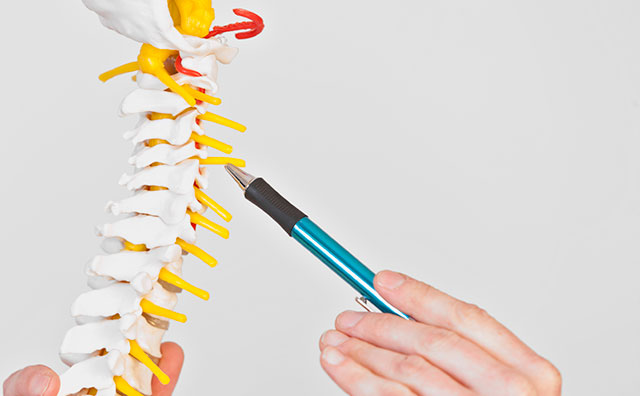Posterior Cervical Discectomy and Fusion

The cervical spine (neck region) is one of the most important and agile parts of your body. It begins at the base of the skull and consists of seven bones separated by intervertebral discs that allow the spine to move freely. The neck has the greatest amount of movement of any area of the spine and is also responsible for protecting the spinal cord and supporting the skull. Because of its vital function in our everyday lives, injury or disease of the cervical spine is a very serious condition.
Posterior cervical discectomy and fusion surgery removes an intervertebral disc and/or bone spurs that are putting pressure on nerve roots. This condition is a result of a herniated or degenerated disc and is known as nerve root compression. Nerve root compression can lead to pain in the neck and arms, lack of coordination, and numbness or weakness in the arms.
Once the disc is removed it may be replaced with a small bone graft that will allow the vertebrae to fuse together over time. The bone may be obtained from another part of the patient’s own body, a bone bank utilizing donor bone or a synthetic bone graft substitute. The space may also be left open, or a metal plate may be inserted to stabilize the spine while it heals. Another option is inserting an artificial disc into the open disc space to sustain motion.
As the name describes, this procedure is done through the back, or posterior, of the body. An incision is made in the midline of the back of the neck and the disc is removed. It is less commonly performed than anterior cervical discectomy, in which the disc is approached from the front of the neck, but may be chosen to best reach a large disc herniation off to the side of the spinal cord. Removing the herniated disc relieves the pressure placed on the nerve root and therefore relieves the symptoms as well. It is performed under general anesthesia.
After surgery, a hospital stay is not usually required. Complete recovery time may take between four and six weeks. Although complications are rare in discectomy, any surgical procedure carries risks. Possible risks include infection, bleeding, reactions to anesthesia, injury to the spinal cord, pain at the treated site, damage to nerves or arteries, blood clots and paralysis. These risks can be minimized by choosing an experienced surgeon to perform your procedure, and by adhering to your surgeon’s instructions before and after your procedure.
Most ACDF patients are able to go home the same day, and are prescribed pain medication for a limited time period. Full recovery takes four to six weeks.
Dr. Kim stays ahead of technology and aims to define the forefront of evolving in spinal care. If you are considering a specialists in spine care, please contact us at 310-423-9716 or fill out or contact form for more information.




